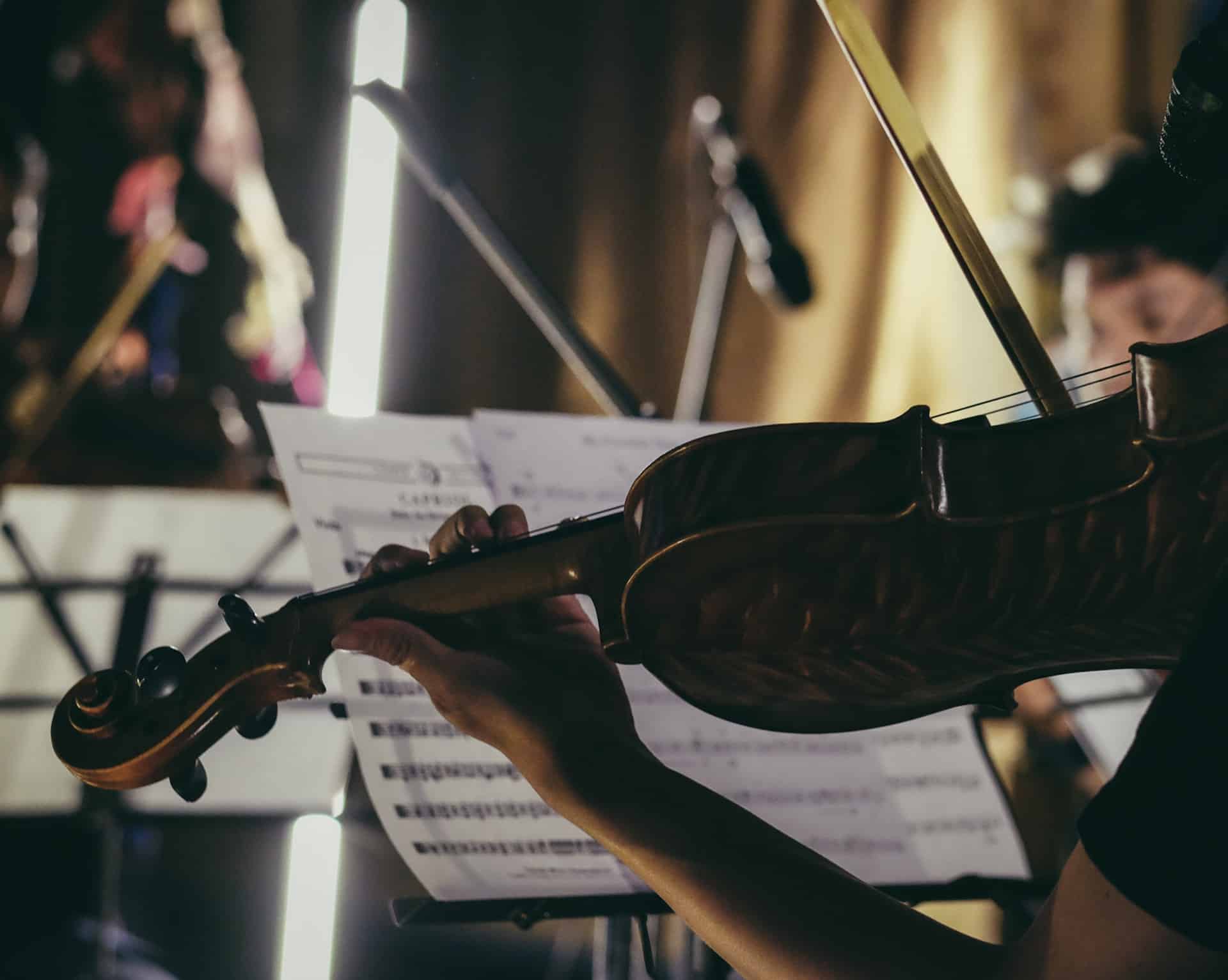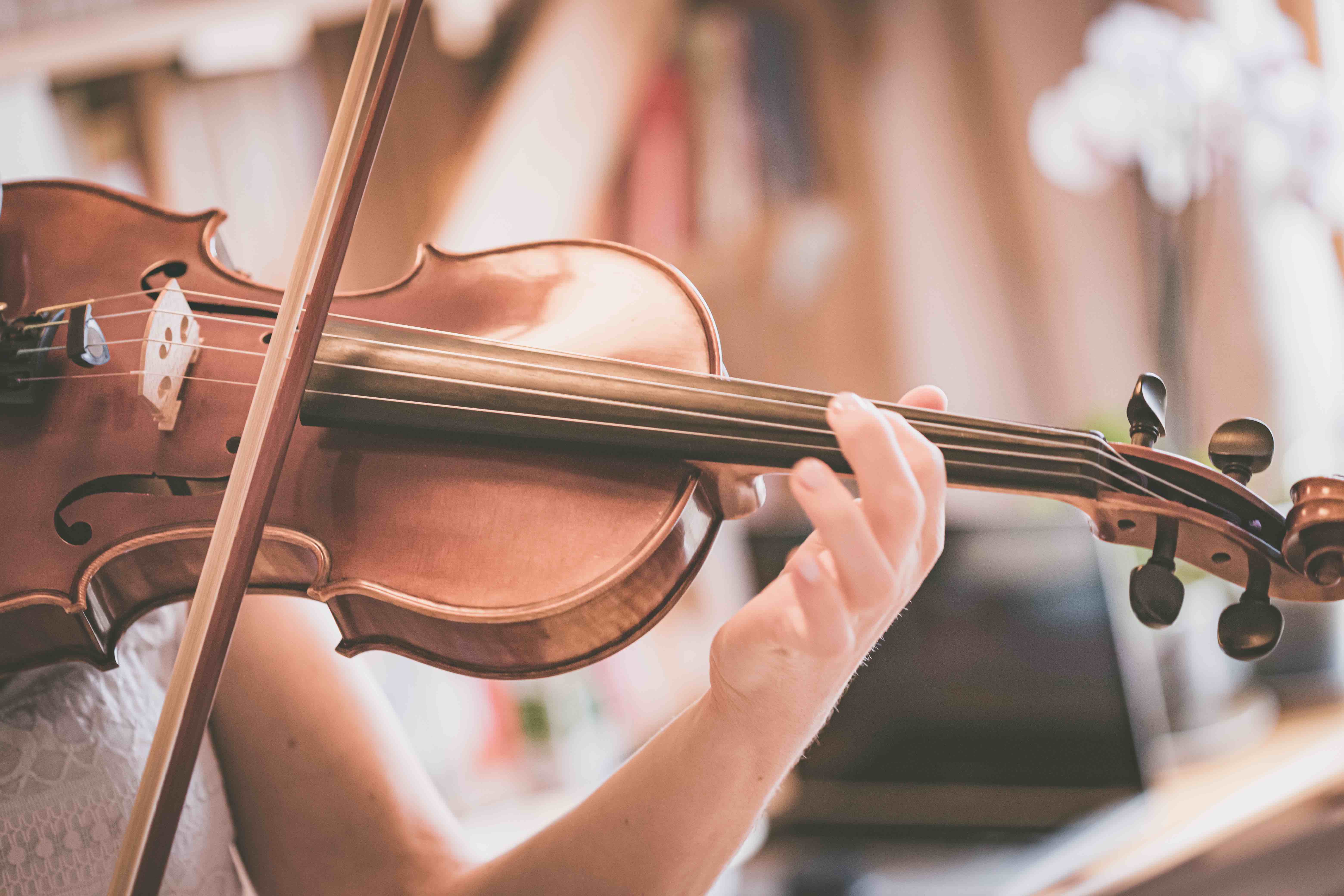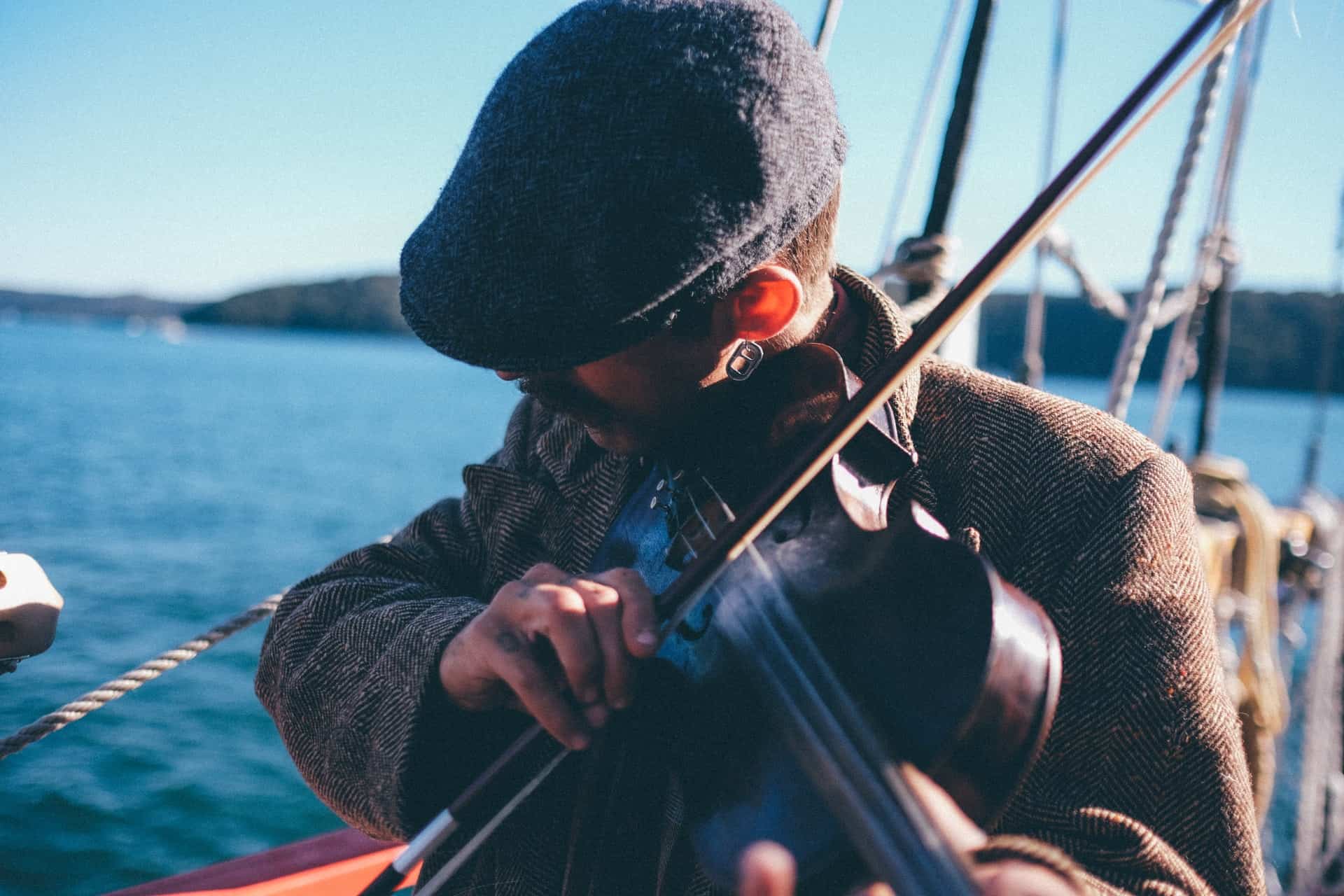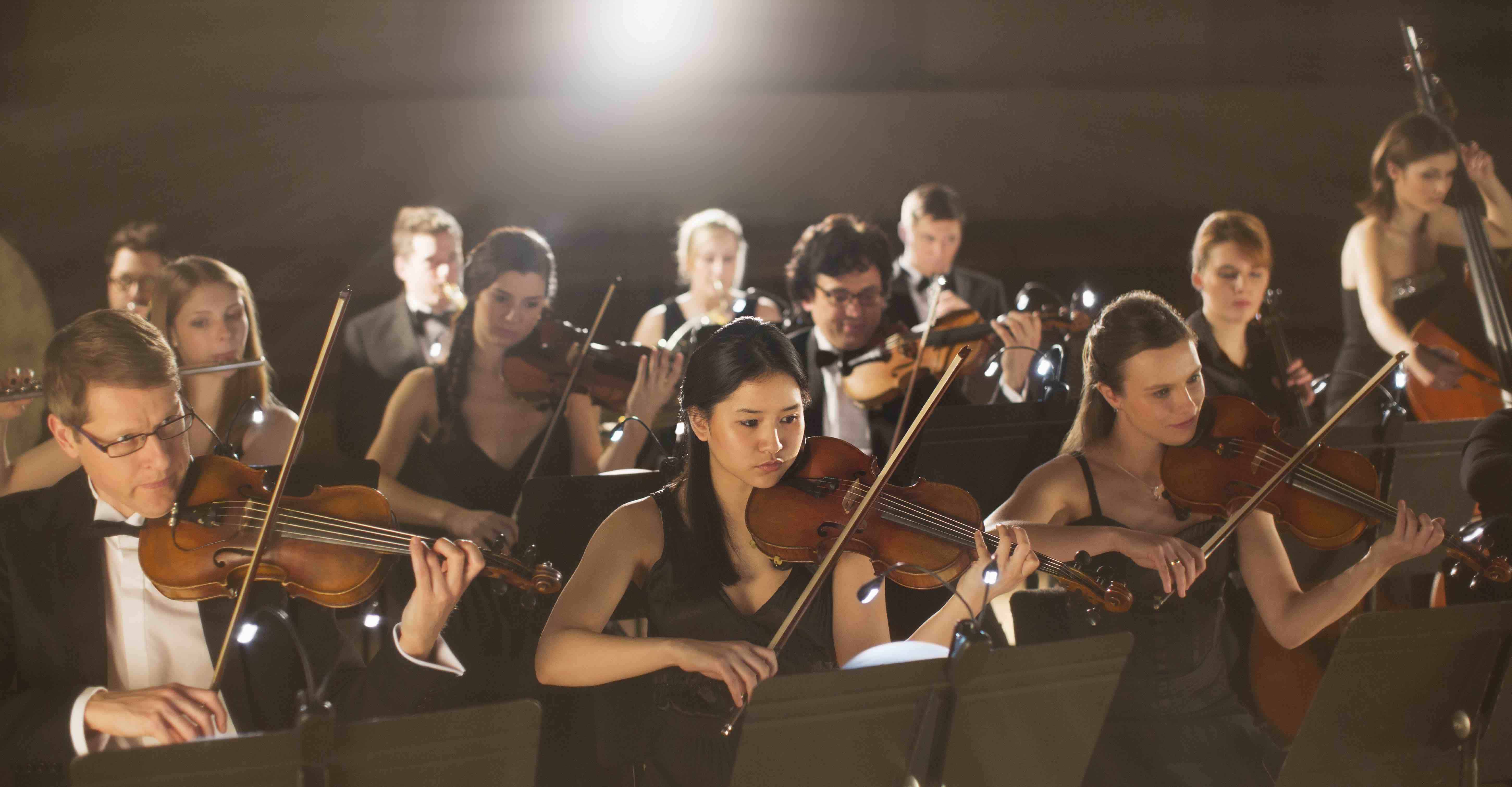
Some of the most common arguments with music folk revolve around the fiddle vs violin debate. We can’t help but be curious about the two terms because classic musical pieces address them separately. In modern times, the word “fiddler” is rarely used to describe string players. They are often called violinists because it sounds simpler and more formal. Because of this, people can’t help but wonder which term to use when discussing the elegant instrument.
To satisfy curiosity, many ask their musician friends about the fiddle vs violin debate. Most of the answers are that the two terms are the same. They don’t mind calling the string instrument both fiddle or violin. However, others refuse to be called a fiddler because it sounds odd and outdated. This makes us wonder what makes fiddles out of trend? Why does being a violinist sound more professional than being a fiddler? Is there a difference between a violin and a fiddle? In hopes of getting answers, we compiled bits of information about the violin and the fiddle.
Fiddle vs Violin: Same or Different?
Before we delve into the history of the beloved string instrument, let’s end the “fiddle vs violin” argument. When it comes to similarities, the two words are used to refer to the same string instrument. You may use them differently, depending on the tone of your conversation. We use the term “fiddle” during informal chats about music and string instruments. Meanwhile, classic music lovers prefer using “violin” when formally talking about the instrument’s elegant tune. We usually hear “violin” instead of “fiddle” because we’re usually exposed to the formalities of the classical genre.

To focus on how they differ, we must look at the musical styles associated with the fiddle and the violin. We use the violin when talking about classical and jazz music. When discussing those genres, we automatically imagine the elegant flow of notes from a violin. Both types feature players moving along the motion of their bow. By doing this, violinists let listeners experience a deeper connection with their performance. The vibrant and smooth tune of jazz violins brightens the mood of listeners. Meanwhile, the strict performance of classical players aims to mesmerize listeners with the practiced feel of known pieces.
The fiddle plays an important role in some folk, cajun, country, and traditional Celtic music. Just by hearing these genres, you can imagine the fast-paced tune contrasting the elegant violin. When watching fiddlers play, you may notice the fixed position they maintain throughout their performance. They do this to focus on the complex finger and bow techniques needed for an upbeat tempo. This motion also helps deliver spontaneous additions to a non-formal fiddler piece.
Choosing Sides on the “Fiddle vs Violin” Debate
You don’t have to choose a side when it comes to the “fiddle vs violin” debate because of their similarities. However, you may still meet people who insist on separating the meaning of the two terms. If you must choose sides, you need to familiarize yourself with the minor details in string instruments. Apart from their musicality, fiddles and violins feature different components. Unlike violinists, fiddlers often add a lower 5th C-string to their set of strings. This helps them maneuver their movements and maintain a spontaneous tune. When it comes to string materials, fiddlers prefer the steel types while violinists use gut or synthetic ones. After analyzing these small details, you may then observe what makes the fiddle and the violin unique.
The different violin or fiddle components we mentioned play an essential role in making them sound distinct. The synthetic or gut strings used by violinists help them keep up with the textbook motion of their performances. The texture of the strings makes it easier for them to glide their fingers and bow to their dramatic motions. Meanwhile, the sturdier strings of fiddles add comfort and variation for the players. The additional string also helps them transition into adding enjoyable ad-libs to their performances. Unfortunately, each unique melody we hear adds fuel to the fire of the “fiddle vs violin” debate among music lovers. It’s either you like the dramatics of the classical violin or the spontaneous tunes of the fiddle.

History Behind the Fiddle and Violin
Before we came to know the violin or the fiddle, people enjoyed the tunes of various bowed string instruments. Some of the oldest bowed instruments included the Byzantine Lyra and the famous Viol of the Renaissance and Baroque eras. However, the fame of the Arabian rubab and the European rebec influenced the reputation of the fiddles we know today. If you look at pictures of players of these bowed string instruments, you may notice their nearly-similar fixed positions. Despite these constraints, the musicians of that time gained fame for producing enjoyable and mesmerizing tunes.
In the 15th century, violinists and fiddlers graced the streets and concert halls of France and Spain. This increased the interest of European nobility in entertaining their guests with the instrument’s lovely tune. Because of this, fiddles and violins often appeared in old artworks and murals. One of the earliest designs we’re familiar with can be seen in old paintings in Northern Italy. There, Andre Amati and Gasparo di Bertolotti gained steady upkeep for being some of the earliest violin craftsmen.
In Chinese culture, the erhu (二胡) became known as the two-stringed Chinese violin. Due to its lack of strings, you may believe it’s easier to play than the violin. However, its small number of strings is the reason why interested players struggle to produce the right sound and loudness.

Violin in Genres
Earlier, we mentioned how the violin became associated with classical and jazz music. With those genres in mind, we can’t help but notice the distinct differences in their sound and style. We usually think of classical violin pieces with performances that follow everything by the book. You may apply this notion to violinists in orchestras who must follow directions from a conductor. However, we fail to notice how other classical violinists aim to make their renditions unique with signature movements. Yes, those overly-dramatic gestures we see from some soloists serve a purpose. They do this not only to keep us entertained but also to add their own style to their performance piece.
Aside from classical music, we came to know the violins during the popularity of the jazz and blues genre. Before the inclusion of guitars, these genres thrived for adding the versatile melody of violins in their performances. Plus, we can’t help but enjoy famous jazz and blues pieces with beautiful violin solos. Due to its free-spiritedness, you might think that jazz violinists are more like fiddlers. However, the fluid movements we see in jazz performances say otherwise. These theatrics were influenced by the African-American string band culture. The humble beginnings of this musical movement made history for popularizing the genre in the West.
Meaning of Fiddler on the Roof
The term “fiddler on the roof” serves as a metaphor for surviving an unpredictable life. When we hear the phrase, we usually think of the famous 1971 film of the same name. It was based on a hit Broadway musical adaptation of the short stories from Tevye and his Daughters. One of the film’s lines explains the unlikeliness of a fiddler risking his life by playing on a roof. The main character, Tevye, further elaborates that everyone in the town of Anatevka lives like a fiddler on the roof. They all share the struggle of upholding their way of life in an ever-changing world.
Yiddish author Sholem Aleichem composed the short stories of Tevye and his Daughters in 1894. In the story, Tevye was determined to stay true to the traditions he grew up with. However, he still had to make way for changes to keep up with the new order of things. Despite the story’s age, we can still incorporate its message in modern times. We all face the challenges of a fast-paced world no matter what era we’re in. We try our best to honor the culture and traditions of our families despite the challenging constraints of the modern world.

Other Meanings of Fiddle
Some people confuse the noun and verb uses of the word “fiddle”. When we hear the word, we automatically think of its musical term. However, the frantic bow jumps that a fiddler makes while performing inspired new meanings to the synonym of the violin. Aside from playing a tune, the verb “fiddle” can also mean “to move the hands or fingers restlessly.” You may also use the verb meaning “to spend time in aimless or fruitless activity.” This definition makes it a synonym for words like tinker or putter. Another related verb holds the meaning “to make minor manual movements especially to adjust something.” You may use it to replace words like meddle or tamper.
In British English, the “fiddle” functions as a noun in two ways. First, it’s the root word for the famous remark or interjection “fiddlesticks.” The other meaning serves as slang for cheating or swindling. Because of this, you must be careful when using the word “fiddler” when traveling around the UK. Locals might think you were scammed or the scammer itself instead of hoping to watch a performance.
Finding Fiddle and Violin Pieces You’ll Love
When it comes to the fame of music genres, pop music constantly dominates the scene. The styles and sound of the genre change over time as more people find solace in their preferred tunes and compositions. When monarchies ruled over most countries, the royals and nobles stayed true to the trend of entertaining themselves with classical music.
Eventually, musicians and singers joined forces and turned poems into songs. As time goes on, we bask in the constant change of quality in new music. Music producers often blend or mix old tunes to create a new trend that attracts more listers. Because of this, some violin concertos or fiddle solos have made their way to the pop or indie scene.

Due to the fame of upbeat pop music, we rarely encounter famous songs with violin or fiddle accompaniment. In truth, we don’t instantly notice when a bowed string sound is added to pop songs. To instantly recognize their tunes in songs, we encourage you to listen to violin concertos or folk fiddle songs. Doing this exercises your brain’s memory of the string instrument’s distinct melody. To get started, we encourage you to listen to Bach’s “Violin Concerto in E-major” or Tchaikovsky’s “Violin Concerto in D-major“. For notable fiddle songs, we suggest you listen to compositions like “Ragtime Annie” and the “Swallowtail Jig”.
Was this page helpful?
Our commitment to delivering trustworthy and engaging content is at the heart of what we do. Each fact on our site is contributed by real users like you, bringing a wealth of diverse insights and information. To ensure the highest standards of accuracy and reliability, our dedicated editors meticulously review each submission. This process guarantees that the facts we share are not only fascinating but also credible. Trust in our commitment to quality and authenticity as you explore and learn with us.
